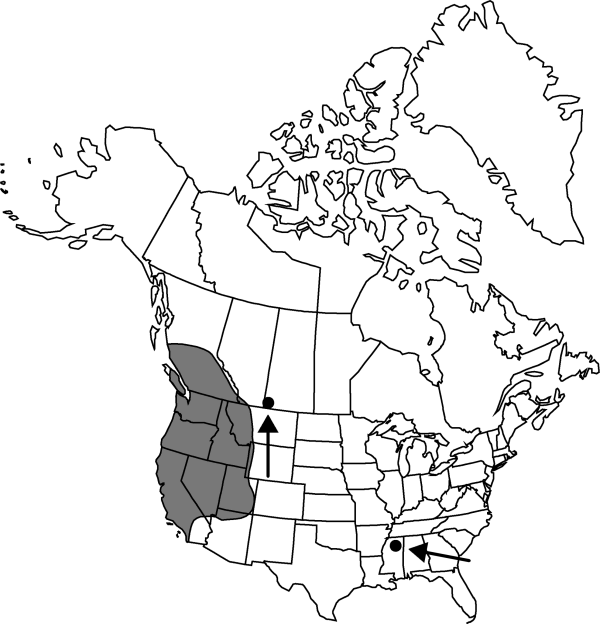Montia linearis
Fl. Francisc., 181. 1891.
Common names: Narrow-leafed montia
Endemic
Basionym: Claytonia linearis Douglas ex Hooker Fl. Bor.-Amer. 1: 224, plate 71. 1832
Revision as of 08:46, 30 July 2020 by imported>Volume Importer
Plants annual, not rhizomatous, stoloniferous, or bulbiferous. Stems erect, branched or simple, 2–30 cm. Leaves alternate, erect, not distinctly petiolate, with clasping leaf-sheaths; blade linear, 2–60 × 1–4 mm. Inflorescences terminal, 1-bracteate; bract linear to oblanceolate, to 20 × 2 mm. Flowers 2–8; sepals 3–7 mm; petals 5, white, 4–6 mm; stamens 3–5, anther yellow. Seeds 1.2–2.6 mm, tuberculate; elaiosome absent. 2n = 28.
Phenology: Flowering spring.
Habitat: Dry to moist habitats, coastal and inland valleys to montane, coniferous forests
Elevation: 0-2500 m
Distribution

Alta., B.C., Sask., Ariz., Calif., Colo., Idaho, Miss., Mont., Nev., Oreg., Utah, Wash., Wyo.
Discussion
Montia linearis is a highly uniform species.
Selected References
None.
Lower Taxa
None.
... more about "Montia linearis"
yellow +
occasionally dentate;crisped +
3-valved +
dehiscent +
branched +
distinct +
Narrow-leafed montia +
absent +
solitary +
irregular +
symmetric +
not showy +
capsular +
2-9-carpelled +
1-bracteate +
racemose +
spikelike +
petiolate +
alternate +
erect +
involute +
plurilocular +
superior +
1-many +
white +
distinct +
absent +
Fl. Francisc., +
1891 +
black +
tuberculate +
rounded +
persistent +
2;9 +
unequal +
clasping +
Endemic +
opposite +
adnate +
prostrate +
erect +
branched +
absent +
Montia linearis +
Montia +
species +
not deciduous +
annual +
glabrous +
succulent +